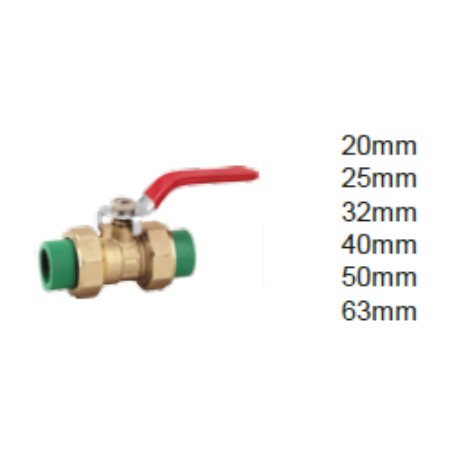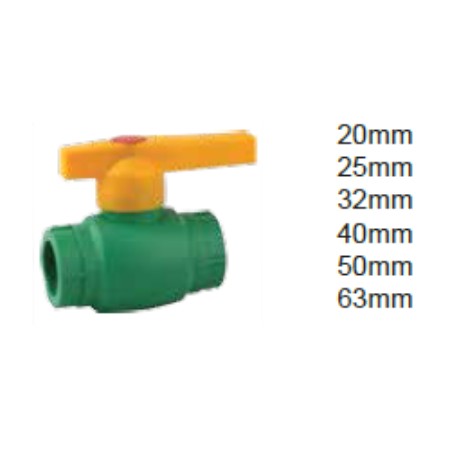PPR Brass Ball Valve
PPR Brass Ball Valve
To regulate the flow of fluid or gas through the pipe, PPR brass ball valves are a type of valve used in PPR (Polypropylene Random Copolymer) pipe systems. PPR pipes are frequently used in heating and cooling systems, hot and cold water delivery systems, and plumbing.
A brass body with a ball within that regulates the flow of liquid or gas through the valve makes up the PPR brass ball valve. The ball rotates when the valve is open, allowing fluid or gas to pass through. The ball rotates to stop the passage of fluid or gas when the valve is closed.
The valve's brass body offers longevity and strength, while the ball inside enables fine control of the flow of fluid or gas. A fusion welding procedure is commonly used to join the PPR brass ball valve to the PPR pipe.
They offer a dependable and effective means to control the flow of fluid or gas through a piping system and are often simple to use and maintain. Brass was used in the valve's construction because of its high level of corrosion resistance, which can be crucial in plumbing applications where the valve will be in contact with moisture or other corrosive materials.
.jpg)

 Cash on delivery available
Cash on delivery available Returns allowed
Returns allowed
.jpg)
